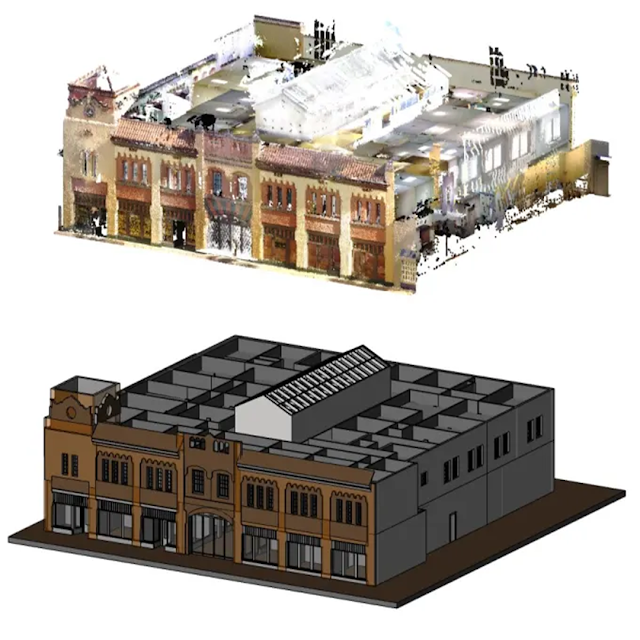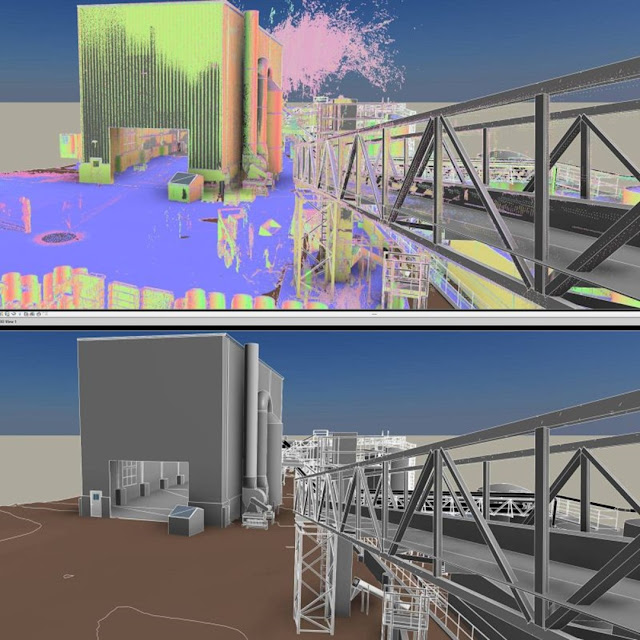Getting from point clouds and other unprocessed data to polished models is an important stage in the world of architectural and engineering projects. Bridge the gap between digital scans and executable designs with this transformation, which is frequently made possible by specialized services like Rvtcad. Together, we will explore the significance and workings of Point Cloud to CAD/BIM modeling. Comprehending Point Cloud Information
Understanding Point Cloud Data
An area or object's digital footprint is comparable to point cloud data generated through photogrammetry or laser scanning. Each point
in the infinite coordinate system of three dimensions corresponds to a unique
location in space. The dense cloud formed by these dots collectively captures
the smallest features in objects, buildings, or landscapes.
Point Cloud's Fundamental Role in CAD/BIM
Modeling Services
The conversion of this complicated data into formats that are useable for
design, analysis, and visualization is largely made possible by point
cloud to CAD/BIM modeling services. They make it possible for experts to
produce precise 3D models that form the basis of projects including building,
remodeling, or repair. The following are the main elements that render these
services essential:
1.
1. Accuracy and Precision: Point cloud data's high resolution allows it to pick up on details that
traditional surveying techniques would miss. Converting this data into CAD/BIM
models improves precision and accuracy in measurements and spatial connections,
minimizing errors during the design and construction phases.
2.
2. Design Efficiency: When point clouds are used with CAD/BIM modeling, the design process is
expedited. Architects and engineers can make well-informed judgments and
optimize available space by using precise models of existing structures.
3.
3. Interoperability: A variety of industry-standard software applications are compatible with
CAD/BIM models generated using point cloud data. This interoperability
facilitates stakeholder participation and allows for the easy integration of
models into larger project procedures.
4.
Visualization and Simulation: Immersion-based visualization and simulation are made possible by 3D
models that are created from point clouds. This helps with design
conceptualization, potential problem identification, and idea presentation to
clients or project stakeholders.
The Point Cloud to CAD/BIM
Modeling Workflow
There are multiple sequential processes in the point cloud to CAD/BIM
conversion process, and each is essential to preserving data integrity and
model accuracy:
1. Data Acquisition: Using laser scanning or
photogrammetry, a point cloud depicting the real world is first created.
2. Point Cloud Registration:
Multiple scans are
registered and aligned to create a cohesive point cloud that depicts the entire
area or item.
3. Data Cleanup: The point cloud is put
through cleaning processes that get rid of noise, outliers, and duplicate
points to guarantee a clean dataset for modeling.
4. Model Generation:
Specialized software
is used to produce CAD/BIM models based on enhanced point cloud data. Surfaces
are specified, features are retrieved, and geometric elements are formed
throughout this process.
5. Validation and
quality tests: To ensure correctness, comprehensiveness, and conformity to project
specifications, the created models go through validation and quality tests.
6. Integration and
Cooperation: Contractors, engineers, designers, and other pertinent parties can
communicate more easily after the finished CAD/BIM models are integrated into
the project process.
Rvtcad: Enabling CAD/BIM Conversion from Point
Cloud
Among the companies offering complete Point Cloud to CAD/BIM modeling
services, Rvtcad is unique. Rvtcad provides customized solutions that address
the various demands of the architecture, engineering, and construction
industries with an emphasis on efficiency, accuracy, and creativity. Their
areas of competence are:
. Advanced Modeling Methods: Using state-of-the-art
tools and methods to turn point cloud data into detailed CAD/BIM models.
. Customization and Flexibility: modifying offerings by
project requirements to guarantee best practices and client contentment.
. Quality Assurance: Extensive quality assurance tests and validations to provide dependable
and accurate models.
. Collaborative Approach: Encouraging smooth communication and cooperation between project
participants to improve workflows.
Conclusion
Point Cloud to CAD/BIM modeling services are essential for leveraging data
in the digital age of design and construction to make well-informed decisions
and carry out projects quickly. Enterprises such as Rvtcad are prime examples of how to convert
unprocessed data into useful insights that spur innovation and advancement in a
variety of sectors. Accepting these services opens up a world of possibilities
where creativity and technology come together to create the built environment
of the future.
.jpg)
.png)

.png)


.png)

.png)


.jpg)